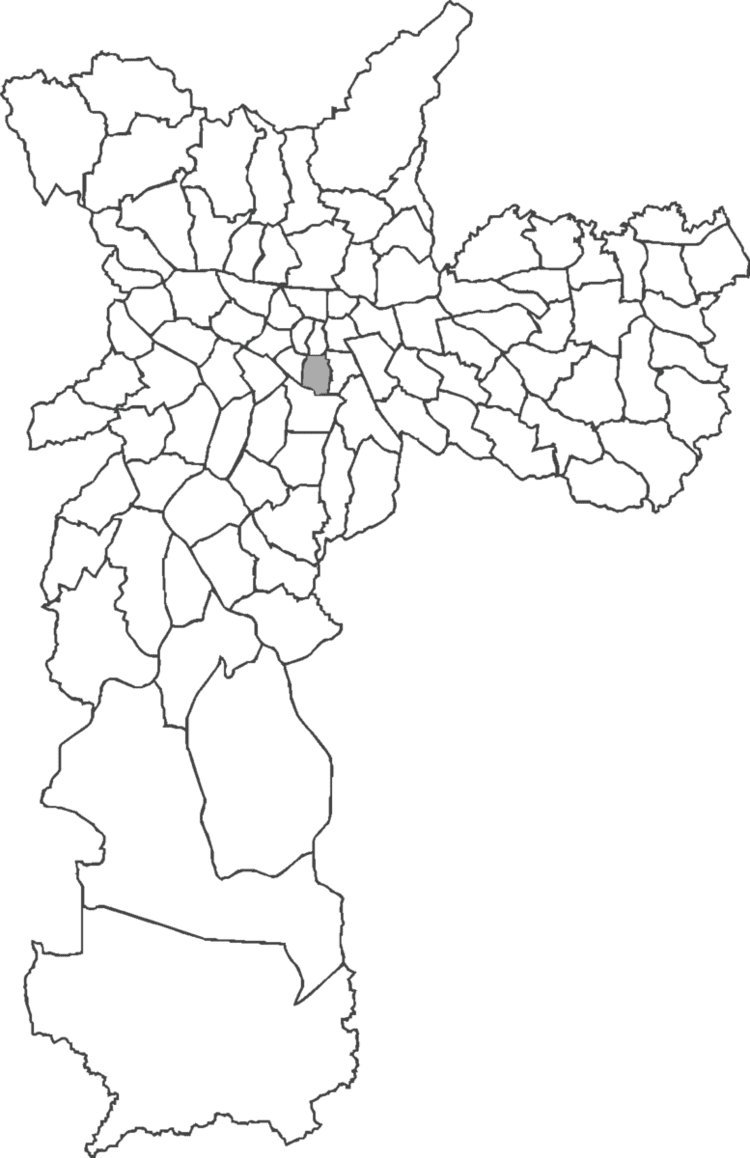HDI 0.936 –high Area 3.7 km² | Subprefecture Sé | |
 | ||
Weather 26°C, Wind W at 5 km/h, 66% Humidity | ||
Liberdade ([libeɾˈdadʒi], liberty; Japanese: リベルダージ, Riberudāji) is the name of a district in the subprefecture of Sé, in São Paulo, Brazil. It is home to the largest Japanese community outside Japan in the world.
Contents
History
Liberdade was known as Campo da Forca (Field of the Gallows) until the late 19th century, and was an area reserved for the execution of slaves and convicts. Death was considered the only path to liberty (liberdade) for slaves. The condemned were led to the Igreja Nossa Senhora da Boa Morte (Church of Our Lady of Good Death) to perform a final prayer for a rapid and painless death. The church remains on Rua do Carmo at the corner of Rua Tabatinguera. Slaves and other convicts were executed in the Largo da Forca (Square of the Gallows), the public square now known as Praça da Liberdade. Cemitério dos Aflitos (Cemetery of the Afflicted) was created in 1774 to bury executed slaves, those who had committed suicide, and others who could not be interred elsewhere. The cemetery was replaced by housing development in the 20th century, and the simple Capela dos Aflitos on Rua dos Estudantes is a remnant of the era. Igreja da Santa Cruz das Almas dos Enforcados (Church of Santa Cruz of the Souls of the Hanged), prominently located to the south of the public square, commemorates the dead of Campo da Forca. Executions were carried out in Campo da Forca until 1891, and the square was renamed Liberdade.
Overview
Significant populations of Chinese and Koreans also live in the district of Liberdade.
The entrance to Liberdade is marked by a nine-meter tall red torii (a Japanese arch that marks the entrance to Shinto temples) since 1974. This towering structure, situated on Rua Galvão Bueno, is a distinctive representation of the neighborhood. Liberdade was successfully connected to the São Paulo subway network in the 1970s, opening up this area to commerce like never before. Today, thousands of paulistanos (citizens of São Paulo) flock to the public square in Liberdade every Sunday to purchase craft goods at the weekly fair. In January 2008, in order to celebrate 100 years of Japanese immigration to Brazil, a project to revitalize the quarter was approved by the mayor Gilberto Kassab. 40% of the restoration were for the visit of the prince Naruhito to São Paulo in June 2008.
The Japanese presence in the neighborhood began in 1912. At this time, Japanese immigrants began to take up residence on the street of Count Sarzedas. This street had a steep slope that gave way to a running stream and swamp area. Basement apartments were numerous and inexpensive, and groups of people or families often lived together in the small rooms. However, the central location of the neighborhood meant immigrants could also be closer to work. As the number of immigrants in the neighborhood grew, so did commercial activity. Soon Japanese-owned inns, emporiums, restaurants, shops, and markets were popping up. These new commercial endeavors also become workplaces, which brought more immigrants to the area, and thus the "street of the Japanese" was formed.
Liberdade is a meeting spot for many groups, especially among young people who are interested in Japanese culture. Manga (Japanese comics) fans, sometimes participating in cosplay, can be seen in the district almost any day of the week, especially on weekends. The district is also a popular tourist destination. People from all over the world, as well as from Brazil itself, are often seen mixing with the Japanese housewives doing their grocery shopping on Galvão Bueno Street and businessmen looking for low priced Asian food for lunch. Most popular is Liberdade street market that occurs each Saturday and Sunday. Offering tastes of traditional Japanese food and various goods, this well-known event attracts so many people from outside Japan Town that the event is predominantly non-Asian.
Media
The Japanese newspaper São Paulo Shimbun is published in Liberdade.
The Japanese newspaper Nikkey Shimbun and its sister Portuguese paper the Jornal Nippak are published in Liberdade.
Culture and recreation
The Museu Histórico da Imigração Japonesa no Brasil (ブラジル日本移民史料館) is located in Liberdade.
Access
Liberdade is served by the São Paulo Metro (Liberdade Station), a station on Line 1 (Blue). The station opened in 1975 and receives 21,000 passengers per day. Access to the station is via Praça da Liberdade.
